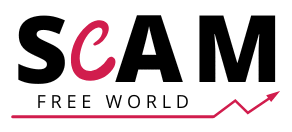When High Returns Come at a High Cost
You see an ad online offering a safe savings account with 7% interest — from a name you trust: Wise, HSBC, or Barclays. It looks legit. The branding is perfect. The interest rate beats anything your bank offers. What could go wrong?
A lot.
Welcome to the dangerous world of fake savings ads—a growing scam epidemic costing UK citizens millions of pounds every year. These sophisticated frauds are not run by amateurs. They’re orchestrated by organised crime syndicates who use cloned websites, fake comparison tools, and slick marketing to rob you of your life savings.
This blog will uncover how fake savings ads work, real victim stories, how to spot the red flags, and how you can stay ahead of the scammers.
📈 The Rise of Fake Savings Ads in the UK
According to The Guardian, the UK has seen a major surge in fake savings ads in 2025. These scams often impersonate big-name brands like:
- Wise (formerly TransferWise)
- Barclays
- Santander
- HSBC
- Nationwide
Victims are lured with digital ads placed across Google, social media platforms, and even comparison websites. The scammers promise savings accounts with sky-high returns — sometimes up to 7% AER, which is double or triple the actual market rate.
Once a person clicks the ad, they’re redirected to a professional-looking but fake website, often a clone of a legitimate financial institution. The goal? To convince you to hand over your money via APP (Authorised Push Payment) fraud, or by using services like Apple Pay, which are harder to trace.
🧠 How Fake Savings Ads Work: Step-by-Step
Let’s break down how these frauds operate in real life:
1. The Bait – An Attractive Ad
Scammers run ads promising “limited time” interest rates of 5–7% with no risk and FSCS protection. These ads often:
- Mimic real investment or savings products.
- Feature branding and logos from genuine companies.
- Claim FCA approval to appear more credible.
2. The Hook – A Fake Website or Adviser
Clicking the ad takes you to:
- A cloned website of a legitimate bank or finance firm.
- A phoney comparison site that recommends the “top deal.”
- Or, you’ll get a call from a “financial adviser” who is actually a scammer posing as a bank employee.
3. The Catch – You Transfer Funds
You’re encouraged to move your money to a “secure” account. You’re given:
- A sort code and account number (often UK-based).
- Reassurance it’s a savings bond or fixed-rate product.
- Sometimes even documents and contract PDFs.
4. The Loss – Your Money Disappears
Once the funds are sent:
- The scammers vanish.
- Your bank may not refund the loss.
- You’re left chasing shadows.
👤 Real Case Study: “I Lost £35,000 to a Fake Wise Account”
In early 2025, a 59-year-old woman from Manchester was browsing Google when she saw an ad for a Wise fixed-term savings account offering 6.5% interest. She clicked the ad and was led to a page that looked exactly like Wise’s official site.
A week later, after exchanging several emails with a so-called “Wise financial adviser,” she transferred £35,000 into the provided account. Within 48 hours, the number went dead. The email bounced back. And Wise confirmed they never offered savings accounts in that form.
This is not an isolated case. Action Fraud and the FCA have recorded thousands of similar reports, with total losses exceeding £200 million in 2024 alone.
🚨 Why Fake Savings Ads Are So Effective
Several factors make fake savings ads especially dangerous:
- They exploit trust in reputable brands.
- They use urgency (“offer ends today”) to pressure quick decisions.
- They’re hard to trace once the money is transferred.
- They prey on savers, often older adults or retirees looking for safe investment options.
- They’re disguised behind digital platforms, which means you may never meet a scammer face-to-face.
🧩 Fake Savings Ads vs. Traditional Scams
| Aspect | Fake Savings Ads | Traditional Phishing Emails |
|---|---|---|
| Delivery | Search ads, social media | Email or SMS |
| Target | Savers and investors | General public |
| Appearance | Professional branding, legitimate-looking sites | Poor grammar, obvious errors |
| Risk Level | Very high (large losses) | Moderate (account takeover) |
| Refund Chance | Low (due to APP fraud) | Often covered by bank guarantees |
🕵️♂️ Red Flags to Watch Out For
If you want to spot a fake savings ad before it’s too late, here’s what to look out for:
- Too-good-to-be-true interest rates (above 4.5% should raise eyebrows).
- Urgent tone: “Limited-time offer”, “Act now”.
- Unusual payment methods: Apple Pay, crypto, direct bank transfers.
- No phone verification: Real banks will always verify your ID.
- No online account dashboard once you invest.
🧰 How to Protect Yourself from Fake Savings Ads
✅ 1. Check the FCA Register
Use the FCA register to verify the company or individual you’re dealing with.
✅ 2. Don’t Click Paid Ads for Investments
Visit official bank websites directly. Don’t trust financial offers from Google ads or Facebook posts.
✅ 3. Call the Bank Directly
Before transferring any funds, call the official number from the bank’s website to confirm if the product is real.
✅ 4. Report Suspicious Ads
Report them to:
- Google Ads: Report phishing
- FCA: ScamSmart tool
- Action Fraud: actionfraud.police.uk
✅ 5. Use a Scam Checker
Tools like Which? Scam Alert Service or Barclays’ scam checker can help you stay informed about new fraud tactics.
🔁 Can You Get Your Money Back?
In most fake savings ads cases, victims fall under Authorised Push Payment (APP) fraud — meaning the person voluntarily transferred money. Unfortunately, banks are not always obligated to refund such losses, especially if:
- Due diligence wasn’t followed.
- Warnings were ignored.
However, you can:
- Raise a formal complaint with the bank.
- Contact the Financial Ombudsman Service.
- Seek support from victim support groups like Take Five or Scam Survivors.
🧾 The Role of Tech Companies & Regulators
Regulators and platforms are being urged to crack down on fake savings ads:
- The FCA has demanded tougher ad vetting from Google and Meta.
- Ofcom has proposed new rules for caller ID and scam call prevention.
- The Online Safety Act (2024) aims to hold platforms accountable for fraudulent ads hosted on their services.
Still, enforcement remains slow. Public awareness is the first and best defence.
🎯 Final Thoughts: Stay Smart, Stay Skeptical
Fake savings ads are a clever blend of technology, psychology, and financial deception. They target your desire for security, growth, and trust in familiar brands. But remember: if an offer sounds too good to be true, it probably is.
Stay alert, ask questions, and don’t be afraid to double-check every financial offer — especially when it comes from an ad.
The safest place for your money is where transparency, regulation, and accountability are clear. And that’s never in a stranger’s hands on the internet.
📣 Have You Been Targeted by a Fake Savings Ad?
If you’ve been affected or know someone who has, share your story on scamfreeworld.co.uk and help us raise awareness. Together, we can make the internet a safer place.




